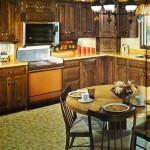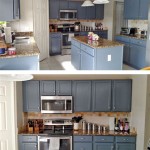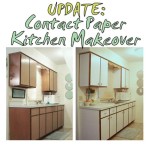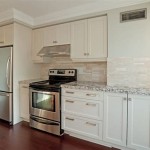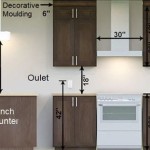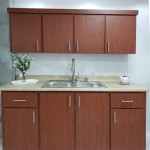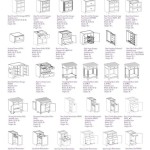Essential Aspects of Overhead Kitchen Cabinets
Overhead kitchen cabinets are an indispensable part of any kitchen design, providing ample storage space while enhancing the aesthetics of the room. When selecting and installing overhead cabinets, several important aspects must be carefully considered to ensure functionality, durability, and a cohesive overall look.
Height and Depth
The height and depth of overhead cabinets are crucial for both practicality and aesthetics. The standard cabinet height is typically between 30 inches to 42 inches, with the optimal height varying depending on the ceiling height and the height of the user. The depth of the cabinets should allow for easy access to stored items while not protruding excessively into the cooking space.
Materials and Finishes
Overhead cabinets are available in a wide range of materials, including wood, laminate, metal, and glass. The choice of material impacts the durability, aesthetics, and cost of the cabinets. Wood provides a classic and warm look, while laminate and metal are more affordable and offer a variety of finishes. Glass cabinets can add a touch of modernity and transparency, making them suitable for displaying glassware or decorative items.
Layout and Configuration
The layout and configuration of overhead cabinets depend on the size and shape of the kitchen, as well as the storage needs. Wall-mounted cabinets are the most common type, offering a variety of heights and widths to accommodate different spaces. Corner cabinets and over-the-range cabinets utilize otherwise unused areas, maximizing storage capacity.
Doors and Hardware
The type of doors and hardware selected for overhead cabinets can significantly impact the overall look and functionality of the kitchen. Shaker-style doors are a popular choice, offering a clean and classic aesthetic. Raised-panel doors add depth and character, while flat-panel doors provide a more modern look. Handles and knobs are available in various styles and finishes, allowing for customization to suit personal preferences.
Lighting and Ventilation
Proper lighting and ventilation are essential for overhead cabinets. Under-cabinet lighting illuminates the work surface below, making it easier to prepare food. Ventilation helps prevent moisture and grease buildup, which can damage cabinets over time. Range hoods over the stove remove cooking fumes and odors, maintaining a clean and healthy kitchen environment.

Overhead Kitchen Cabinets A Must Have For Modern Kitchens

Overhead Kitchen Cabinets A Must Have For Modern Kitchens

Overhead Kitchen Cabinets A Must Have For Modern Kitchens

How To Organise Your Kitchen Wall Cabinets More Efficiently

Standard Kitchen Cabinet Dimensions For Your Homee Design Cafe

Is It Time To Say Goodbye Overhead Kitchen Cupboards

Overhead Kitchen Cabinets Design Ideas

Overhead Kitchen Cabinets A Must Have For Modern Kitchens

5 Smart Wall Storage Ideas To Upgrade Your Kitchen

Kitchen Overhead Cabinet
Related Posts

